Today I’m going to show you a great way how to reupholster an ottoman tutorial – and it cost me less than $20 to get this new, fresh look.
This was my first reupholstering project – so taking on a new upholstery job made me a little nervous. I was shocked I accomplished it, so I made this tutorial that is perfect for beginners.
There are plenty of step-by-step photos that will lead you along.
I’m pleased how tearing off a little old fabric and giving this ottoman new life turned out – and you can follow this reupholstering tutorial and learn how to do this yourself!
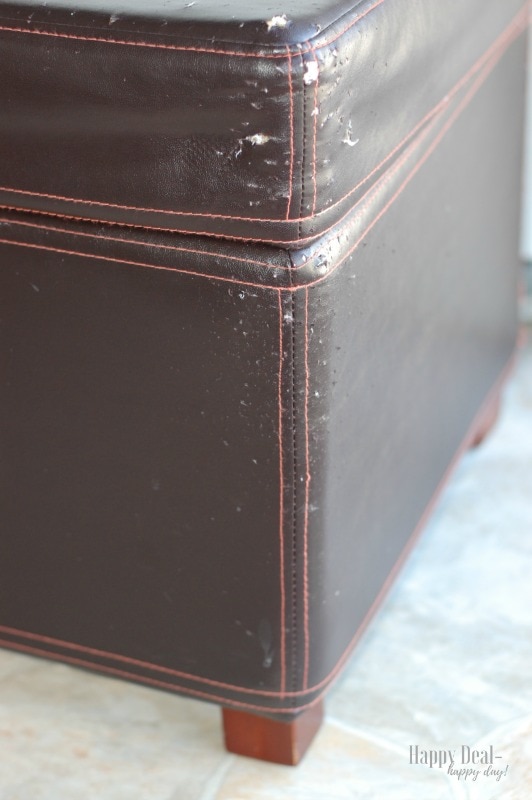
Does your old furniture look anything like this?
You know, with the nice pleather ottoman that a furry baby (aka your cat) has literally almost torn to shreds in your living room? My cats have this weird 6th sense that tells them that all of our ottomans like this (we have 3) were made for their claws to ruin. Goodbye favorite chair!
So now that my cats have ruined my ottomans, I have two options. One – buy a new one. Probably since I don’t want to spend a ton, it will be of the same cheap fake leather and cost me about $50-$75 to replace. Or two – ask myself if this ottoman is worth reupholstering and the best way to recover this furniture. And can I do it for less than half the cost? That price would have to include fabric pieces that my cats can’t tear apart as easily as the faux leather.
Did I have experience upholstering furniture before I did this? No! Was I unsure of my success? You bet! But with $20 fabric and a staple gun (and a sewing machine), I didn’t know that reupholstering an ottoman was a DIY job that a normal person like me could handle. So in my opinion – don’t throw it out! Instead, create a new furniture piece and recover it like I’m about to show you!
Is it worth it to reupholster?
So that’s why I created this tutorial – to show you that you tackle a reupholstery job at your house rather than throwing something with sentimental value in the dumpster and heading off to the store to spend more than double when you can fix your antique furniture yourself for super cheap! Plus think of all the labor costs you’re saving with this DIY project.

Materials Needed for This How To Reupholster an Ottoman Tutorial:
- 3 yards of fabric, upholstery
- Staple Gun
- Sewing Machine with thread to match your fabric color
- Utility Knife
- Spring Clamps
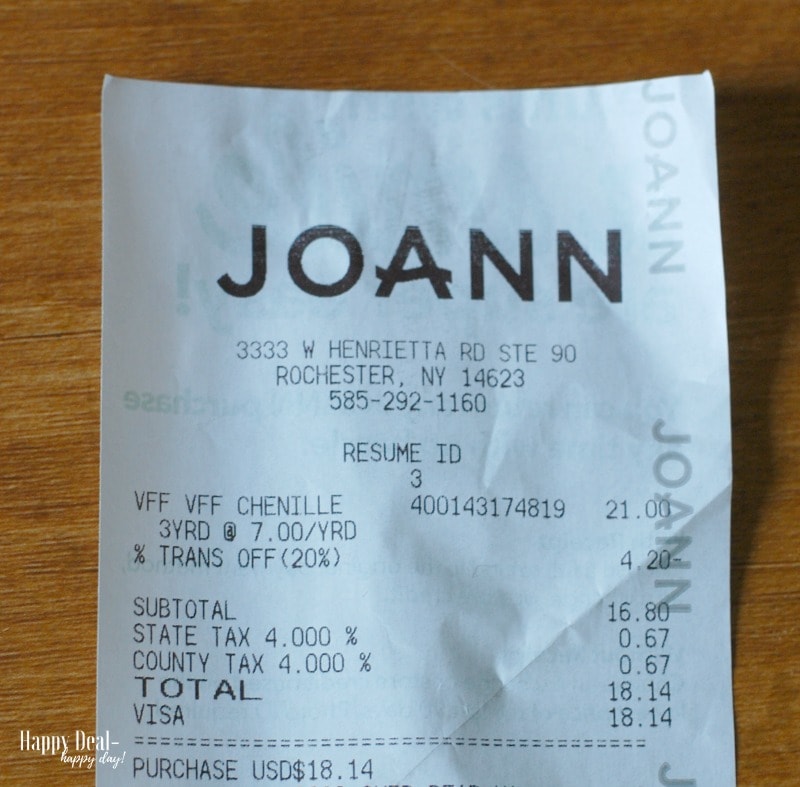
How much does it cost to reupholster an ottoman?
I found my upholstery in the clearance section of Joann’s for $7.00 a yard, so not a lot of money. PLUS I had a 20% off coupon – making it just $18.14! Now that doesn’t mean that every recovering ottoman project will be that cheap, but if you find fabric on sale, I just want you to know that it can be less than $20 plus labor!
And whatever fabric you select will give your original pieces of furniture a new look that will stand the test of time.
How do you reupholster a storage ottoman?
The ottoman I’m going to show you in this tutorial is a storage ottoman and it has two parts. Therefore, I’m going to upholster them in 2 stages and use slightly different techniques for the top and for the bottom storage area.
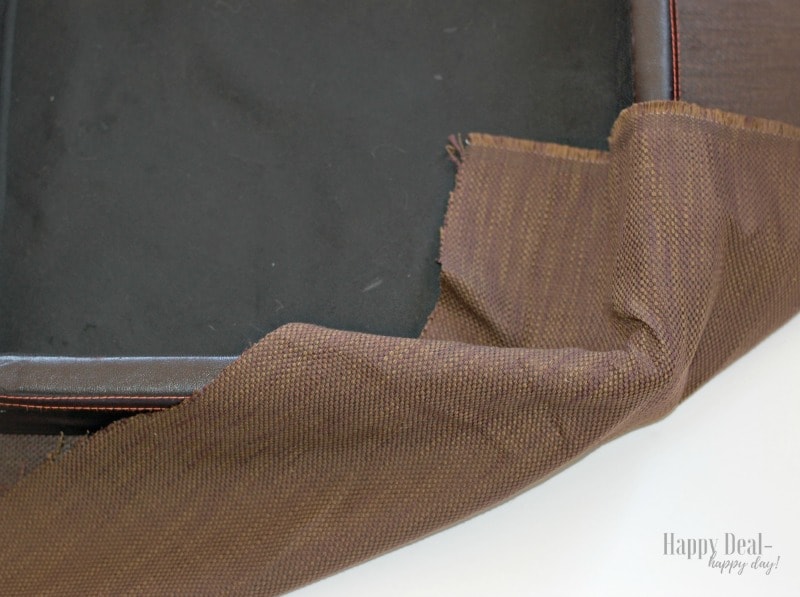
How to Reupholster an Ottoman Lid
How to recover an upholstered ottoman with a lid doesn’t have to be hard. In fact it’s really quite quick and easy! You only need a staple gun to secure it! This is the no-sew way to recover an ottoman.
- Take the ottoman top and lay it down, top side down, on the upholstery fabric.
- Cut the fabric so that the sides are long enough to wrap the corners and there is enough left over to staple. I did not get exact dimensions when I did this – I just cut out enough fabric to make it work.
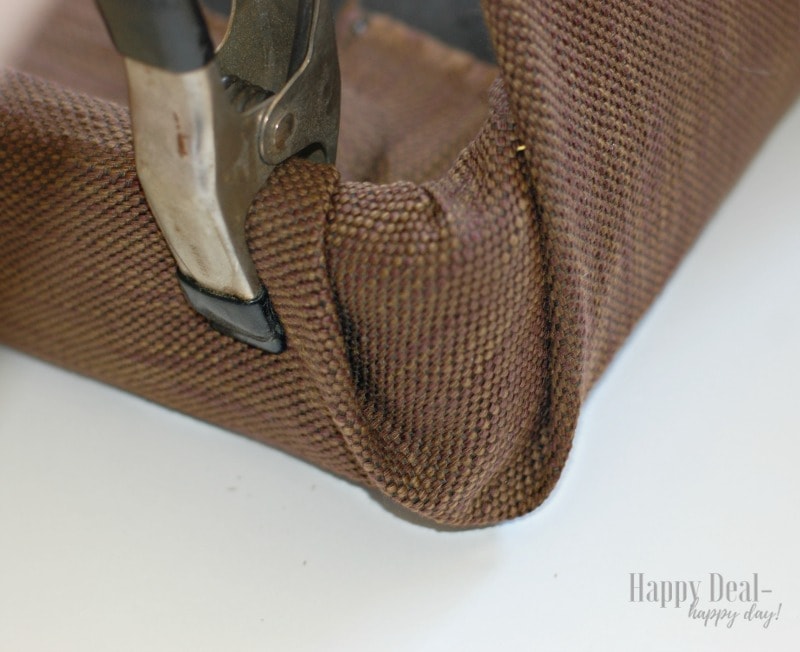
3. To make the corners nice and neat without having to sew, take the corner of the fabric and fold that directly inside the corner. Then take the 2 sides and fold them up and over making it look like the picture above – nice and neat, tucked in corners.
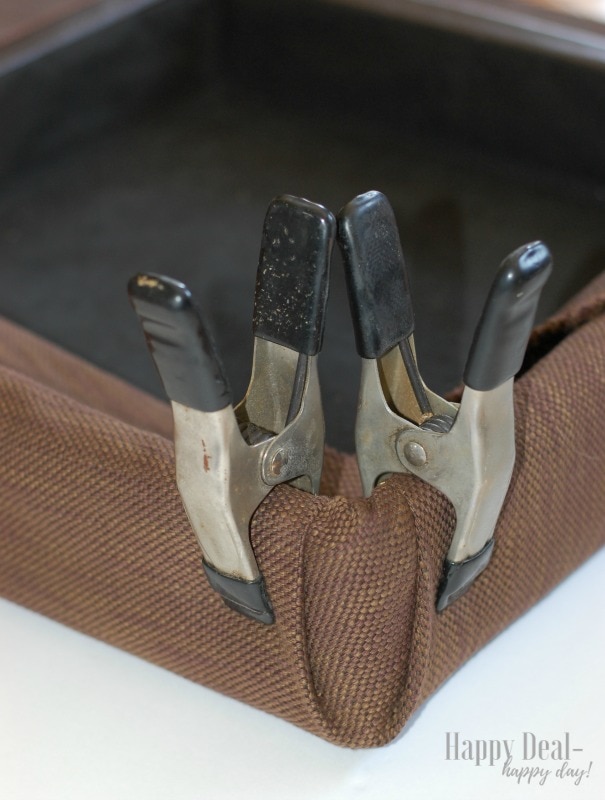
4. If you have any spring clamps, now would be a great time to get them out and hold the corners in place while you staple them. Be sure the fabric is pulled tight before you clamp – you don’t want any wrinkles to show up on the top flat surface when you are done!
I’ll be honest and say that this project was the first time I had ever used a staple gun. It’s pretty easy.
5. To use your staple gun, just push hard against where you want to staple so that your hand doesn’t jerk too much or your staple will get placed way off. Just staple a little bit apart from each other to make sure the fabric is secure.
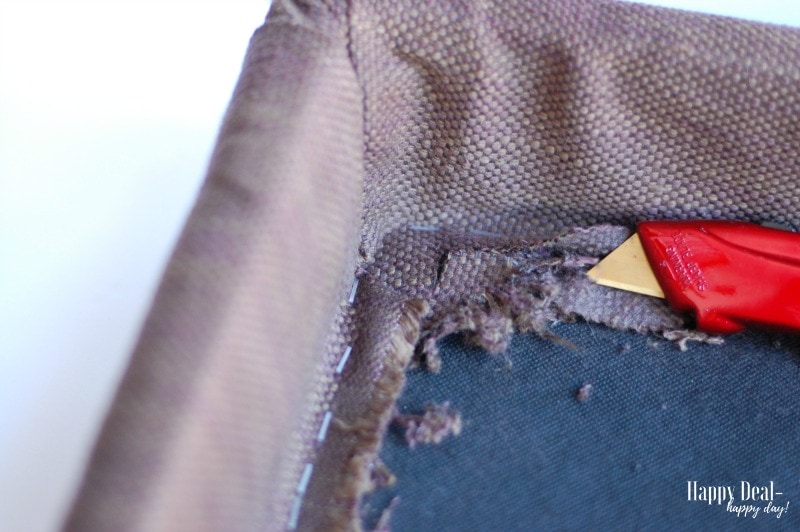
6. The corners will end up with a bunch of material in the corner. I got out my utility knife (be sure to use a NEW blade so it is sharp enough to cut through thick upholstery fabric) and clean up the corners a bit.
I love my CTL CUTTER Heavy Duty Sharp Box Cutter Retractable Utility Knife for this job. I used a new blade and it easily cut the fabric!
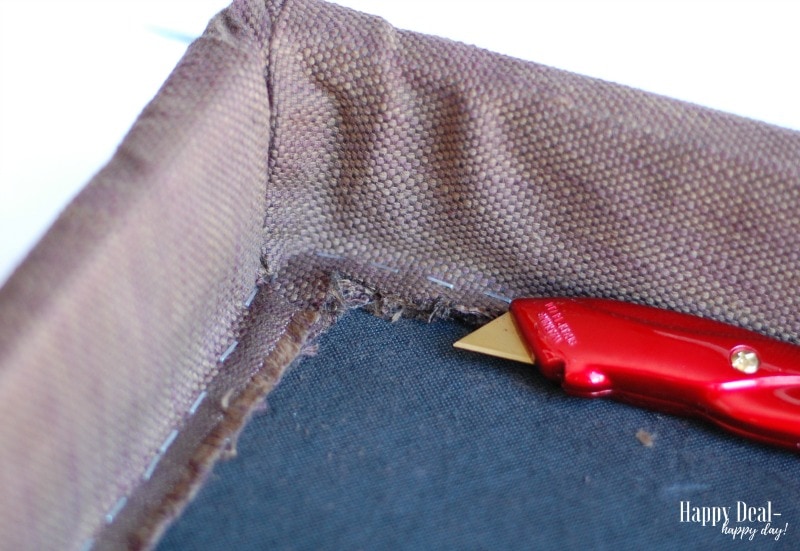
Here is one corner that turned out great.
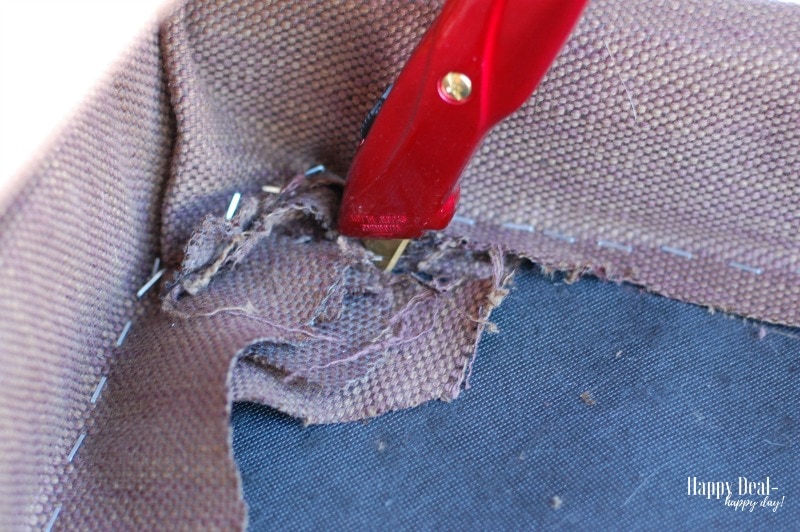
Not every corner was so perfectly neat though and I had more work to do to trim out the access fabric.
7. Once the access fabric is trimmed, then the top of your ottoman will be done!
Now we need to move on to the bottom storage box part of the ottoman. If you totally do not want to sew to do this, you can cover it the same way you did the top by folding the corners and stapling. I was finding it a bit challenging myself to do it that way and still get the fabric tight and looking good. So I decided it was time to get the sewing machine out to help.
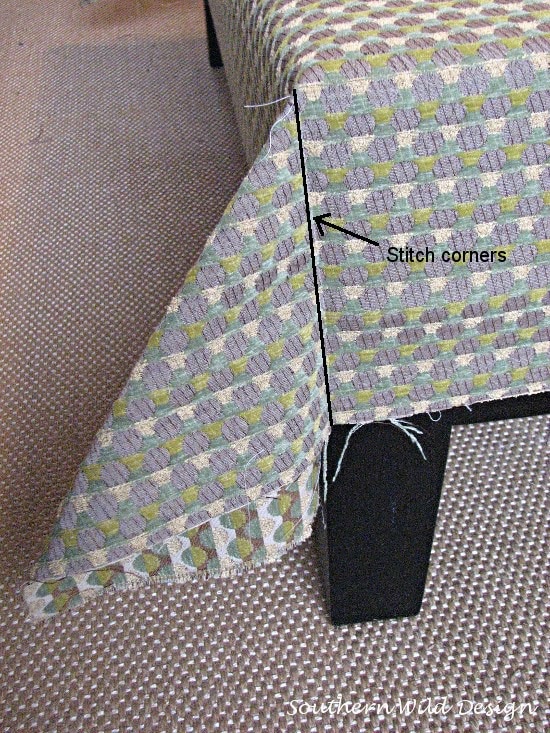
8. For reupholstering the bottom of my ottoman with storage, I was inspired by Southern Wild Design on how she sewed the corners of the fabric to make a “box” shaped cover for the bottom of the ottoman.
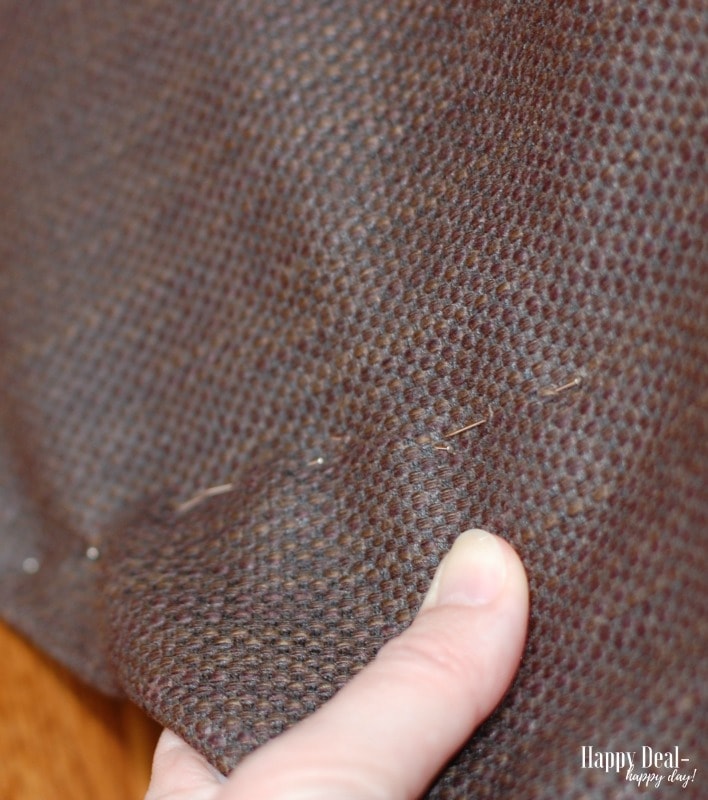
9. Start by using a chalk pencil to mark where you need to sew. Then simply take some sewing pins and pin along the chalk marked line.
I also recommend having a second pair of hands to help you pull the corners tight while you pin.
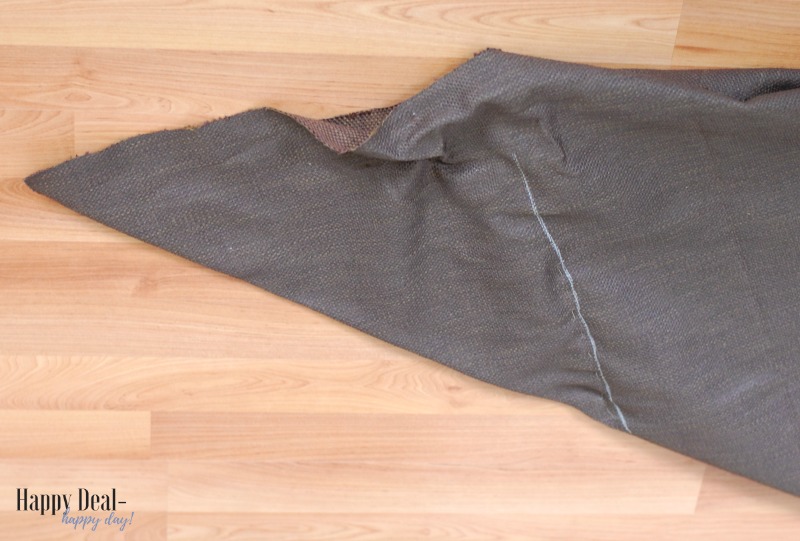
Here is my chalk marked line with the pins before it was sewed.

10. After you sew it, go ahead and trim off that excess triangular-shaped fabric. You can actually trim off that part before you sew as well.
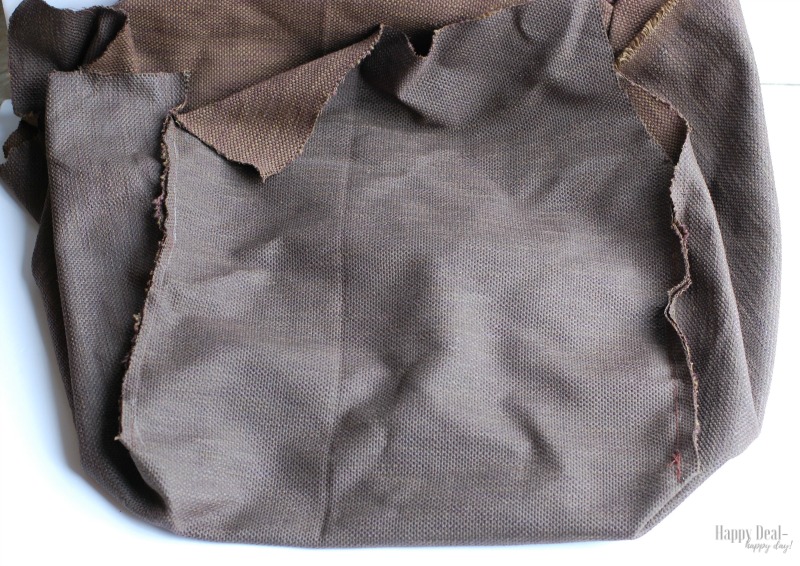
11. I recommend creating these corners one at a time by pinning and sewing, then heading back to the ottoman and measure and pin the second corner, sew that – and then going back and measuring the third corner, again followed by sewing. That way each corner is snug and custom to fit. Again, having someone help you pull it tight while you pin is highly recommended. I’m not sure I could have done this part by myself without my husband’s help.
The picture above shows all 4 corners sewed – and I haven’t turned it inside out yet.

12. Now it’s time to turn it outside in and get the true outside on the outside. Then slide it over the ottoman. You don’t even need to remove the original faux leather covering!
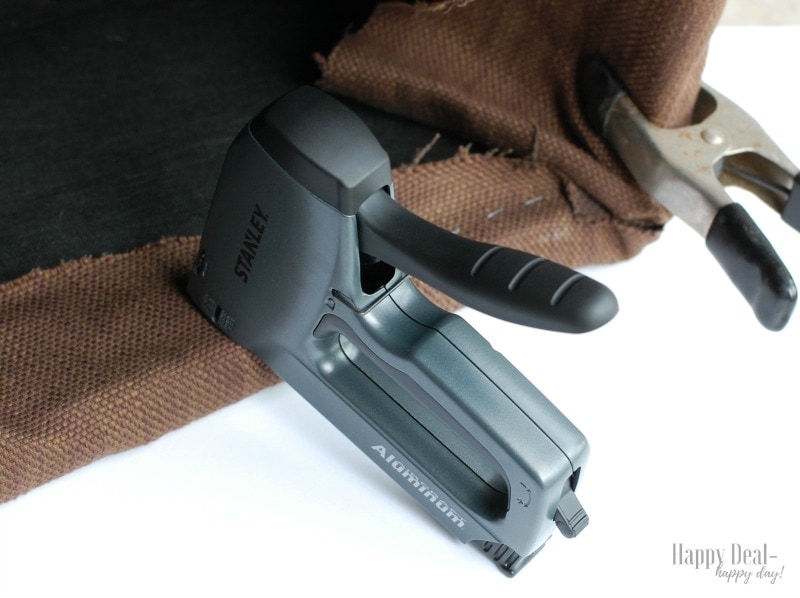
13. After that, get out the clamps and staple gun again to fully secure the ottoman cover in place.
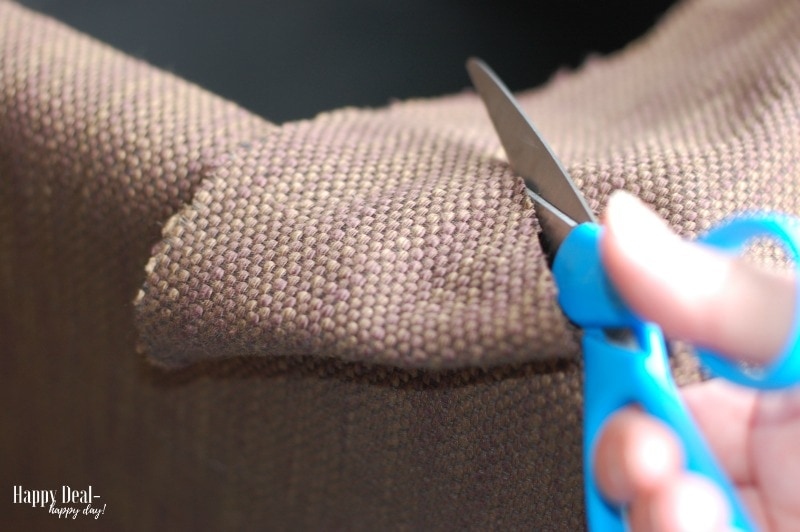
14. It’s a good idea to keep the scissors handy and trim off excess fabric as you are tucking in the corners before you staple.
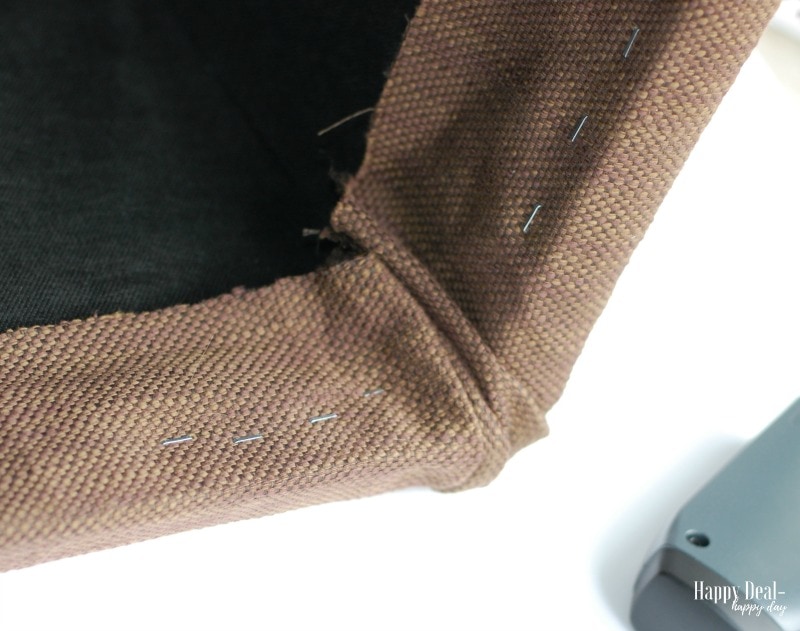
15. Use the staple gun just like you did on the top and go around each of the four sides and be sure the new cover is securely attached to the bottom!
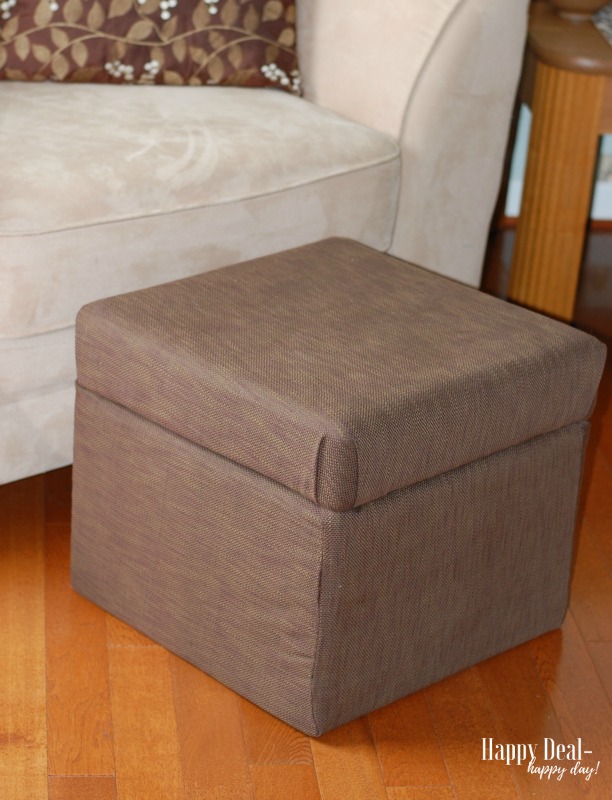
Since this tutorial covers how to reupholster an ottoman that opens, I have to tell you that even with the extra fabric – the top and bottom still fit lovely together. I was nervous that the thicker fabric would hinder how they fit – but it turned out perfect!
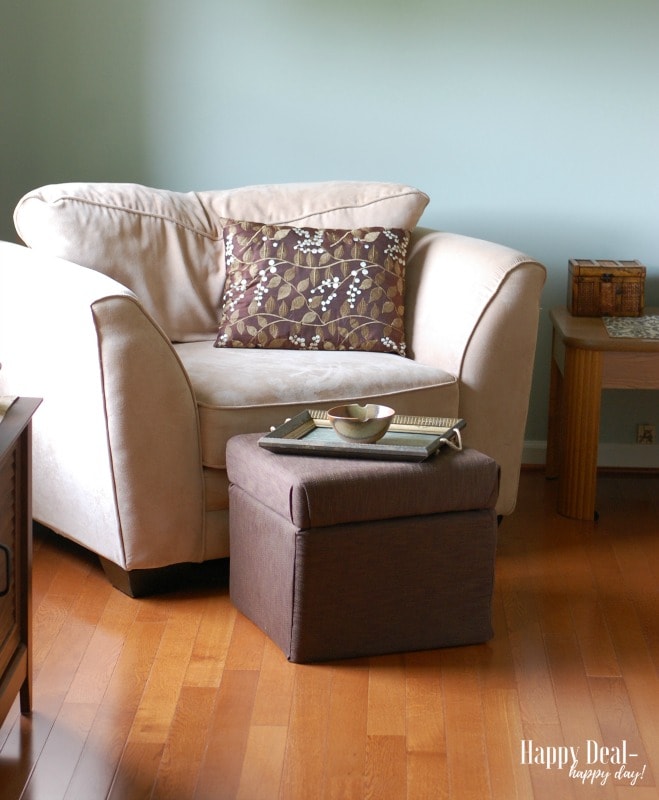
Here is my ottoman completely re-upholstered! I hope this how-to reupholster an ottoman tutorial was easy to follow and will inspire you to tackle the same project. It will save you money, plus boost your confidence that this was something you did yourself!
My cats have tried to scratch this material, but I try and quickly stop them when I can. Plus when they do, this material is much more resistant to kitty claw marks and I’m imagining this lasting much much longer than the faux leather did!
Want a cute tray for your ottoman like the one pictured above? I made it out of an old picture frame – you can make one too with this DIY Wood Tray tutorial!
If you follow this how-to reupholster an ottoman tutorial and complete a project of your own, I’d love to hear about it in the comments!
Looking for some more DIY fix-its around the house? Check out these posts:
How to Fix Broken Canvas on a Porch Swing
How To Peel An Apple In 19 Seconds Using Your Drill!
How To Stain Wood: Tips for Beginners
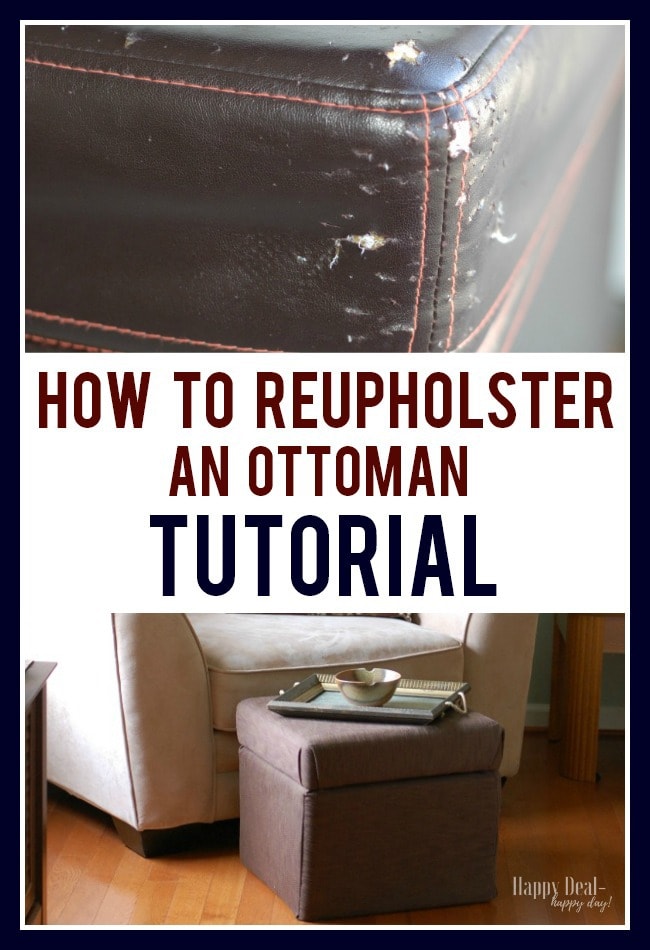










Edgar says
Excellent!
Liane says
I have cats too. Put in a spray bottle some white vinegar and peppermint oil with some water and mix. Then spray where they want to scratch. Cats don’t like the smell.
Maura says
Great Tip = thanks!
Leigh says
Can you tell there is leather under the fabric?
I am looking to do the same but feel like it will feel weird with both layers or even make a sound
Maura says
No – no one can tell that there was a “pleather” material underneath the new fabric.